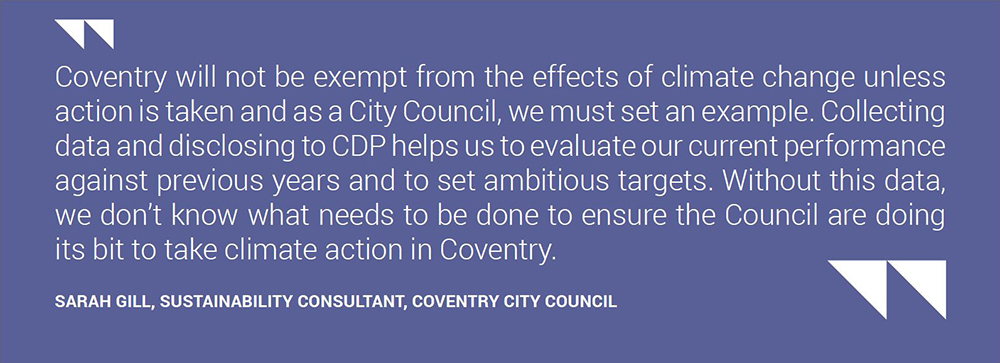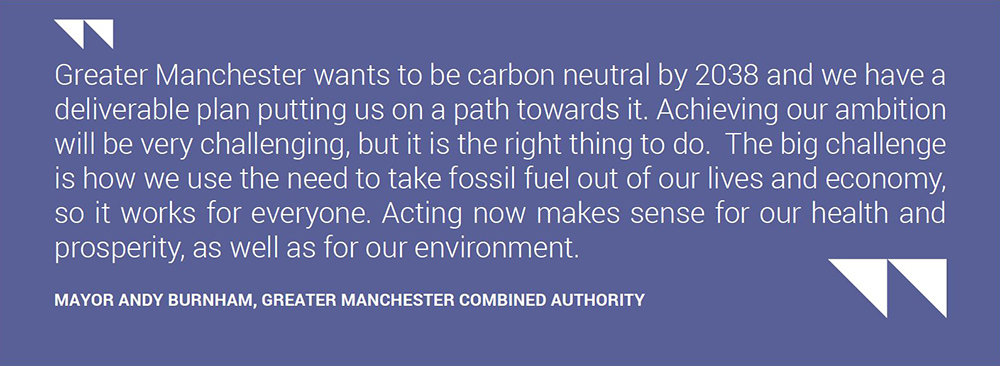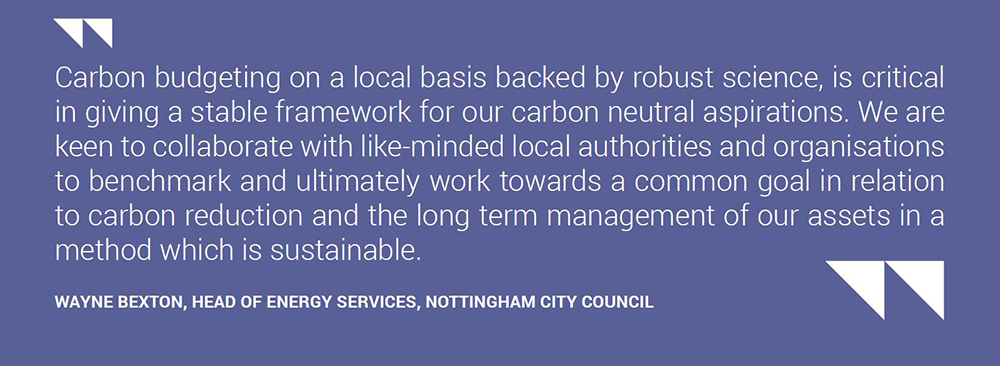Over 200 local authorities across the UK have declared a climate emergency following the release of the IPCC 1.5 report, which called for urgent climate action by 2030. But how do councils capitalise on this moment to drive meaningful change?
Inspired by Greta Thunberg, the UK has seen protests from students and Extinction Rebellion calling for the government to act, which has led to Parliament calling a climate emergency. In June 2019, the UK government adopted a net-zero target by 2050, making it the first G7 country to do so. With the scientific urgency and the increased call for strong leadership, local authorities will need to focus their resources on the right actions and track their progress towards a low-carbon water-secure world.
Disclosure to CDP allows cities to gain data-driven insights on the gaps and opportunities for policydevelopment, resource management and investment.These recent developments present an opportunity to acknowledge the seriousness of the science and to build on the public support for further accelerated action.
In June 2019, the UK government set a new target to be net-zero by 2050 based on the Committee on Climate Change’s recommendation.The UK government will notbe able to achieve this alone. They will need citizens, companies and local authorities to work together to help make this change a reality. The UK has long been a leader on climate policy by being the first government to implement the Climate Change Act in 2008 and the development of the Green Finance Taskforce.
By disclosing to CDP, the UK government can better understand how the targets and commitments set by local authorities can help the UK meet the goals of the Paris Agreement. Cities can also influence corporations that operate within their boundaries to ramp up ambition. Out of the 7,000 companies that disclose to CDP – 500 of them are located in the UK.
Without understanding how to act, cities risk missing the window of opportunity to act and meet their goals. This is why disclosure is the first step to building sustainable economies. Data helps develop insights, and aids management and coordination leading to effective environmental action.

One of the first exercises a city should take is understanding where their emissions come from. The SCATTER tool (Setting City Area Targets and Trajectories for Emissions Reduction) is available for local authorities to provide them with an evidence base from which to build their ambitious carbon reduction plans. Originally developed with Greater Manchester Combined Authority, Anthesis Group and The Tyndall Centre for Climate Change Research Manchester, it was launched in March 2018. The tool provides cities with a greenhouse gas inventory that is compliant with the Global Covenant of Mayors, modelling of carbon reduction pathways which can be analysed against the Paris Agreement, and provides tangible actions that can be taken. Nottingham City Council has been commissioned by BEIS to take forward the enhancements of SCATTER.
Why is it important to understand emissions and your carbon pathway?
- By understanding your city’s emissions, you can identify the policy areas that will make a meaningful impact in reducing emissions within your city.
- Emissions inventories provide a baseline to make an informed decision about what carbon reduction target your city should set.
- Understanding potential pathways helps to meet commitments in line with national and international objectives.
- Use this analysis to engage stakeholders in your city to help develop a collaborative climate action plan.
- Measure and monitor the progress of your policies in achieving your climate targets.
The SCATTER tool was key in helping Greater Manchester understand their carbon budget and what level of ambition of action was needed to help them decarbonise rapidly and achieve carbon neutrality by 2038.
Their 5-year Environment Plan sets out a roadmap of actions they need to take to meet their target. If all the actions in the plan are implemented it could save up to £1,000 per household on energy bills. They see these actions as a way to build a healthier more prosperous city region and are certainly leading the way.

Effective action on climate change requires keeping cumulative emissions of carbon dioxide within an agreed limit. The Tyndall Centre for Climate Change Research Manchester is supporting cities with a tool for setting carbon budgets based on the latest science that meet the objectives of the UN Paris Agreement.
According to the IPCC 1.5 report, the world has already warmed by around 1.0°C above pre-industrial levels due to human activities. As a result, we are already facing the impacts globally and in the UK. Extreme weather events, such as the ‘Beast from the East’ and record temperatures in both summer and winter months in the UK are becoming increasingly more frequent. At the current rate of warming we will reach 1.5°C between 2030 and 2052 – with irreversible loss of ecosystems and major disruptions to human societies as a result. With the clear scale of action required, targets that are being set need to be ambitious and in line with the science.
Why is it important to set an emissions reduction target?
- Setting a target helps drive ambition and show citizens that local government is taking meaningful action.
- A carbon budget helps to focus policy on the scale and urgency of reducing carbon emissions to achieve climate change goals.
- It can be used to engage stakeholders to discuss their own operations and align visions.
- It provides confidence to companies and investors that the city will support innovation, reduce uncertainty and provide a clear direction.

There has been confusion with terms like ‘net zero’ nd ‘carbon neutrality’ being used interchangeably. To help clarify, the Tyndall Centre has laid out three things to look out for when reviewing a target:
- Which greenhouse gas emissions are included (all, only long-lived gases, only CO2)
- If and how offsetting is included
- Which sectors are included (aviation, shipping, heating etc.)
This is where disclosure is necessary to ensure we can compare targets and conduct analysis in a standardized way. Transparency means we can track the progress of cities to better understand their role in helping us meet the Paris Agreement.
Just 7% of cities who reported to CDP in 2018 received an A score. We urge cities to step up their action, set targets in line with what the latest science says is needed to prevent dangerous climate change, and transparently share their progress.
